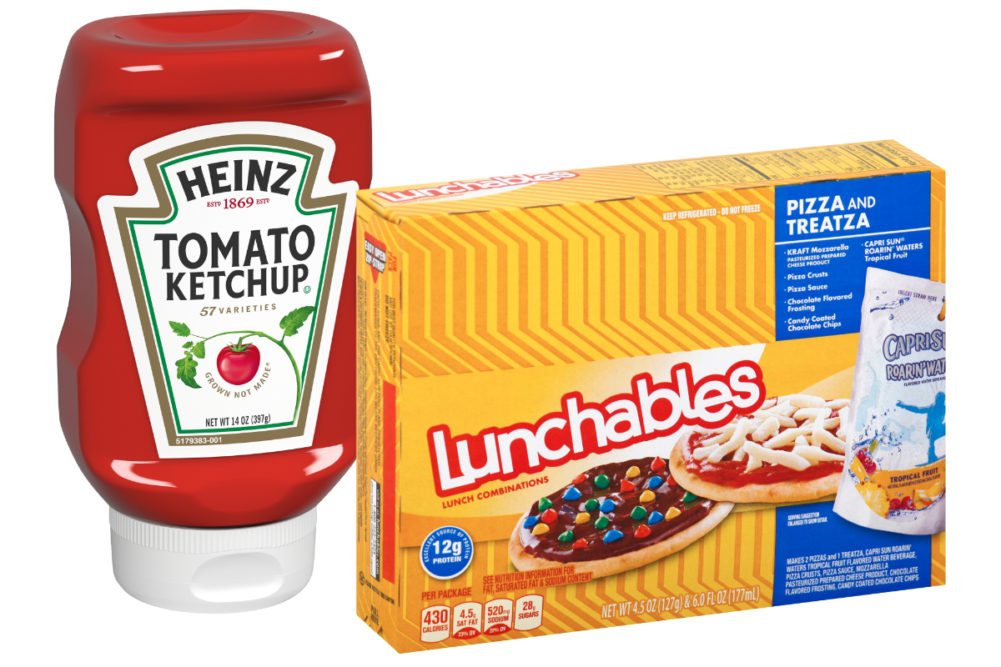CHICAGO — Executives of the Kraft Heinz Co. can point to achievements in 2020, which they labeled as a year of transition.
Net sales increased 4.8% when compared to fiscal 2019. E-commerce sales grew by more than 100% and now account for more than 5% of the company’s global sales. Marketing investments increased by $100 million, and Kraft Heinz made a Forbes list of world’s best employers.
“We made rapid progress in our first year of transformation, culminating with stronger-than-anticipated results through our fourth quarter,” said Miguel Patricio, chief executive officer, in a pre-recorded management discussion. “As a result, we begin 2021 with momentum across our brands and business.”
Going forward, Kraft Heinz plans to fully deploy its new operating model this year, transition to growth in 2022 and accelerate growth in 2023.
The company posted net income of $361 million, or 29¢ per share on the common stock, in the fiscal year ended Dec. 26, 2020, which was down from $1.94 billion, or $1.59 per share, in the previous fiscal year. Net sales of $26.19 billion were up from $24.98 billion.
The company’s retail market share in the United States continuously improved over the course of the year, said Carlos Abrams-Rivera, US zone president. Heinz Ketchup and Lunchables each picked up more than two points of market share in the fourth quarter, he said.
“Additionally, we are excited to have introduced or re-introduced more consumers to our brands in 2020,” he said. “We grew household penetration across all portfolio roles, with the stronger gains in our easy meal-oriented and dessert platforms.
“New consumers are finding that Kraft Mac & Cheese, Classico pasta sauce and Ore-Ida potatoes are enhancing their at-home eating experience. Overall, for the full year, we grew household penetration in roughly two-thirds of the categories in which we participate.”
Portfolio reshaping in 2020 included selling some cheese businesses to Lactalis Group for $3.2 billion. In February of this year, Kraft Heinz agreed to sell its Planters nut business to Hormel Foods for $3.35 billion in cash. Kraft Heinz in the United States in 2020 reduced its number of stock-keeping units by 16% to simplify its assortment and increase its capacity, Mr. Abrams-Rivera said.
“This, along with a 25% reduction in waste, helped reduce downtime, improve the overall efficiency of our manufacturing assets and increased our overall production by mid-single-digit percentages for the year,” he said. “In fact, we increased our production volumes in capacity-constrained products by more than 20% since August.”
In the fourth quarter, Kraft Heinz reported net income of $1.03 billion, or 84¢ per share on the common stock, which was up from $182 million, or 15¢ per share, in the previous year’s fourth quarter. Driving the increase were non-cash impairment charges in the previous year’s fourth quarter that did not repeat. Net sales grew 6% to $6.94 billion from $6.54 billion. The sales growth was offset partially by foodservice declines, a negative impact from exiting the McCafé licensing agreement and unfavorable changes in retail inventory levels.
Kraft Heinz in the first quarter of the current fiscal year expects organic net sales growth to be flat to positive. The first quarter will compare to the previous year’s first quarter that included a six-point to seven-point contribution to organic net sales growth.
Mr. Patricio, while answering questions in a Feb. 11 earnings call, said the company is looking at 2021 in a conservative way, but he added January saw strong consumption gains and February is looking good, too.
“If this persists at this level, we may have an upside in our results, but I think that with the environment so volatile, we better continue taking a quarter-by-quarter approach,” he said.
The year could see rising costs for non-commodity ingredients, packaging and transportation, said Paulo Luiz Araujo Basilio, global chief financial officer. He gave two reasons why Kraft Heinz expects to manage the rising costs.
“The first one is that we are very confident on the supply chain efficiency programs that we have that we'll expect to unlock savings across our supply chain, and the second is on our revenue management initiatives across the globe that, in combination with the innovation, renovation market investments that we're doing, can help us with pricing if we need,” he said.






